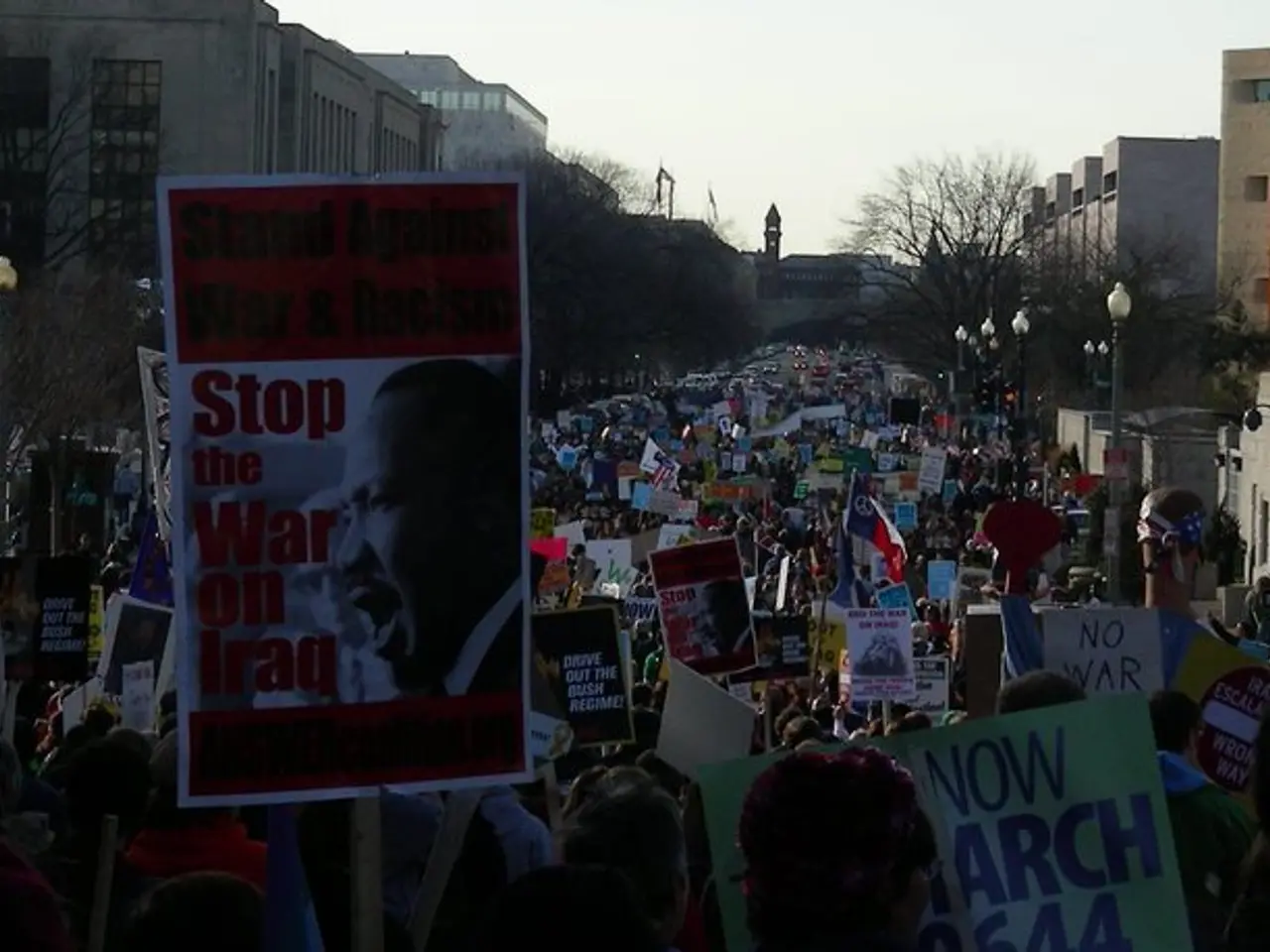Tehran implements water conservation measures, shutting down public restrooms due to water scarcity crisis.
In the heart of Iran, the capital city Tehran is grappling with an acute water crisis, exacerbated by drought, over-extraction, and mismanagement. The government's water-saving measures, including emergency rationing and prolonged supply interruptions, are dramatically impacting households, businesses, and public services [1][2].
Currently, Tehran is undergoing emergency water rationing and frequent supply interruptions, with households and businesses enduring hours-long daily outages [1][2]. These water-saving measures involve widespread rationing across over 40 cities, with reservoirs supplying Tehran now at around 13-14% capacity [1][2].
The impact on public services in Tehran has been significant. The severe water cuts affect daily life and businesses, while government attempts to curb demand—such as plans for weekly holidays to reduce electricity and water use—have been met with public criticism and skepticism about their effectiveness [2]. Public services struggle due to strained water supplies, with over 60% of Tehran’s water now sourced from depleted groundwater, which raises sustainability concerns [2].
Amidst these challenges, the closure of public toilets is adding to the hardships faced by residents. Reports from news portals Didehban-Iran and Shargh indicate that many public toilets, including those near and inside subway stations, have already been closed [3]. As of now, no alternative facilities for public toilets have been announced by the Tehran city administration.
President Massud Peseschkian is considering a "natural disaster" that could worsen in a few weeks, as all the country's reservoirs are almost empty. He is even contemplating relocating the capital to prevent possible chaos [4]. The energy and water crisis in Iran has become a major concern for its citizens, with many taking to social media to express their struggles and complaints about the difficult living conditions [5].
In a bid to conserve resources, serious considerations have been made to reduce the workweek from five to four days or to order a one-week shutdown of the capital to save electricity and water [6]. However, the closures of essential services, such as public toilets, have been criticised as denying residents a basic necessity [7].
Despite aggressive conservation campaigns and urgent water transfer projects, the problem persists largely because of long-term governance failures and inefficiencies in water management [1][3]. Many experts and citizens attribute more of the crisis to mismanagement than solely climate factors [1].
In summary, Tehran’s water-saving efforts primarily consist of rationing and supply interruptions that are dramatically impacting households, businesses, and public services, with limited success in reversing deep-rooted structural problems fueling the crisis [1][2][3]. The closure of public toilets is just one more challenge in a long list of hardships faced by the city's residents.
- The water-saving measures in Tehran, including emergency rationing and prolonged supply interruptions, are not just affecting households and businesses, but also the realm of environmental science, as the climate-change-induced water scarcity becomes more severe due to the ongoing mismanagement.
- The energy and water crisis in Tehran, exacerbated by drought and over-extraction, has reached a level that it is not solely a matter of science or policy-and-legislation, but a pressing issue in the general news, with many citizens vocalizing their struggles on social media.
- In the face of a potential environmental catastrophe, the closure of public toilets during water-saving efforts delves into the realm of politics, as the decision is met with criticism and questions about the government's ability to prioritize essential services during such trying times.







